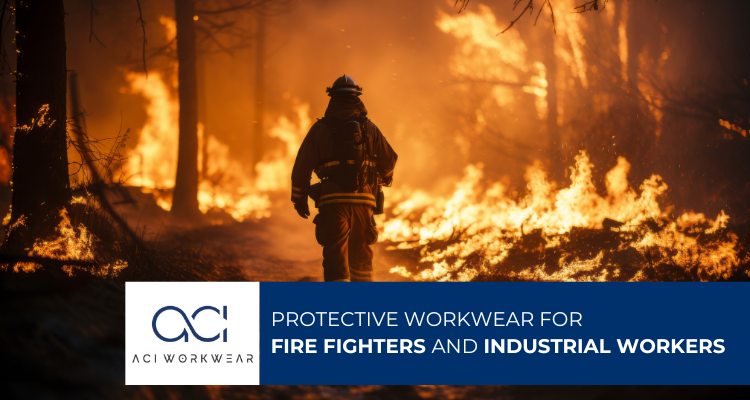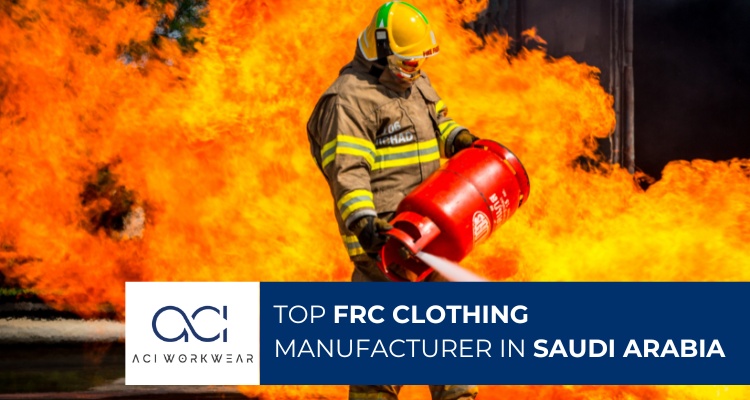
Top Quality Hi-Vis Jackets for Construction Industry Workers – A Complete Guide
20/06/2024
Best Safety Reflective Jackets: All You Need to Know
15/07/2024Introduction
Flame-resistant (FR) and Arc-Rated (AR) are both important clothing that may look similar but have distinctive roles to play as workwear. Understanding their differences can help you make better decisions on how to protect your work team better. Therefore, we discuss the difference between FR and AR clothing.
Flame-resistant clothing (FR)
FR clothing is designed to protect against fire hazards by resisting ignition and self-extinguishing flames. The main goal of FR clothing is to shield workers from flames, embers, and flash fires.
For clothing to be considered fire-safe, it must not only resist ignition but also quickly extinguish any flames to protect the wearer. It's important to note that FR clothing is not flame resistant , meaning it can catch fire when exposed to flames.
However, it is designed to self-destruct, preventing further burning once ignited. This type of clothing helps reduce the severity of burn injuries by preventing the spread of flames.
If flammable clothing catches fire, it will continue to burn and cause more extensive damage to the wearer. While FR clothing protects by self-destroying. It does not melt onto the skin, offers thermal insulation against heat, resists tearing to prevent skin exposure, and minimizes burn injuries to increase the chances of survival.
The goal of FR clothing is to protect the wearer from the thermal hazard. This means that the clothing will prevent the wearer from getting second or third-degree burns, even in areas directly exposed to the hazard that’s where the bend streak rating comes into play. The official standard for arc rating, ASTM 1959, requires fabrics to be flame-resistant for testing.
Arc-rated clothing (AR)
The term AR refers to arc-rated clothing that is resistant to flames. It protects the wearer from electrical arc flash hazards. AR clothing requires additional testing not required for FR clothing.
It is exposed to a series of arc flashes to determine how much energy the fabric can block before it can cause the wearer severe burning, half of the time. More simply put, arc rating measures the protection of FR fabrics to arc flash. The result of this test is expressed in calories and is known as the Arc Thermal Performance Value (ATPV).
You can determine if your garment is arc-rated by checking the internal label on your clothing. When working with things that have electricity, workers need to wear clothing that can handle the electricity.
Clothing could catch fire due to nearby combustible material that could be ignited and liquid metal splatter from electric arcs. Arc-rated apparel or equipment indicates that it has been tested for exposure to an electric arc flash. Fire-resistant (FR) clothing without an arc rating has not been tested for exposure to an electric arc.
AR is developed to make it easier for customers and employers to determine whether the clothing they are wearing provides adequate protection. It allows the wearer to see if the garment will resist ignition, offer thermal resistance, or self-destruction.
Difference between FR and Arc-rated clothing
1. Protection
Generally referred to all fabrics with FR ratings are not arc-rated, while all clothing with an arc rating is flame-resistant (FR).
Arc flash fabrics are specifically tested to effectively protect against high temperatures generated during arc flash incidents. They provide insulation at different arc flash incident energies, measured in cal/cm2, while flame-resistant only protects during flash fires.
2. Temperature
It is important to note that arc flashes produce higher temperatures compared to flash fires. Therefore, the AR clothing protects in high temperatures compared to FR.
3. Compliance
The NFPA 70E committee formed the term arc-rated to help workers choose the right clothing for protection against arc flash thermal hazards.
While arc-rated clothing is fire-safe, many in the safety and industry sectors refer to it as FR or AR clothing for clarity. In both cases and especially with FR clothing, the main purpose of the apparel is to prevent ignition (as tested by ASTM D-6413 and known as the Upward Fire Test).
4. Ignition
When FR clothing is ignited by an arc flash, flash fire, and molten metal, the danger to the wearer instantly becomes much greater because a clothing fire will last much longer than the initial hazard. It will typically burn the victim over a larger area of their body and more deeply, increasing the risk of airway and lung damage.
FR clothing prevents further burning after the initial hazard has passed, reducing burn injuries to only the area of the body directly affected by the hazard. This reduction in the total body surface area burned is the most important factor for survival.
Whereas a flame-resistant fabric is tested for arc rating, 21 samples are exposed to an arc flash, and sensors measure heat transfer through the fabric. The energy needed to cause a second-degree burn through the fabric 50% of the time is calculated using Stoll curve modeling, which predicts the likelihood of a second-degree burn.
This energy value, expressed in calories, then becomes the arc rating for that fabric and any garments made from it and protects from extreme ignition.
5. Value
In simpler terms, arc rating assesses the protection of flame-resistant fabrics against arc flashes. Either ATPV (Arc Thermal Performance Value) or Ebt (Energy break threshold) can be used to determine the arc rating. Regardless, the arc rating is a single value, and the higher it is, the better.
It is advised that you should choose and purchase fabrics that have been specifically tested for arc flash danger, rather than accepting any FR fabric available on the market. The arc rating of AR clothing is usually shown on an inside label, and sometimes on an outside label.
6. Safety
Clothing with arc flash protection is better at preventing fire spread in the workplace compared to FR clothing. While FR clothing can protect employees, AR clothing often provides higher safety standards. AR materials offer increased protection, reducing the intensity and energy passing through the fabric.
It's important to understand the differences between AR and FR clothing for your employees' health and safety. Arc flash clothing offers higher safety, while flame-resistant clothing can protect in specific situations.
Therefore, injuries are more likely to occur without AR and FR clothing protective materials when exposed to high temperatures, leading to internal injuries, lung damage, and tissue harm.
Conclusion
Now, you can understand the difference between AR and FR garments and choose wisely. If you still have confusion between AR and FR clothing, then you can contact us.
ACI Workwear is a global manufacturer of industrial workwear, having thirteen-plus years of experience in making FR and Arc Resistant clothing, general workwear, high visibility clothing cold protective/freezer clothing, and activewear.
Having a team of experts as an FR clothing manufacturer in India , we provide the best guidance from choosing the right workwear for your team to making the perfect FR and AR clothing as per your requirements.









